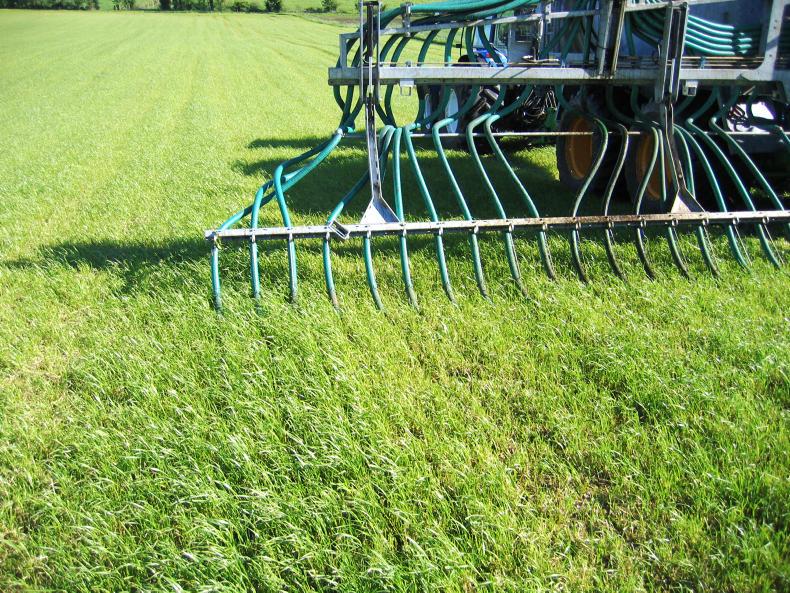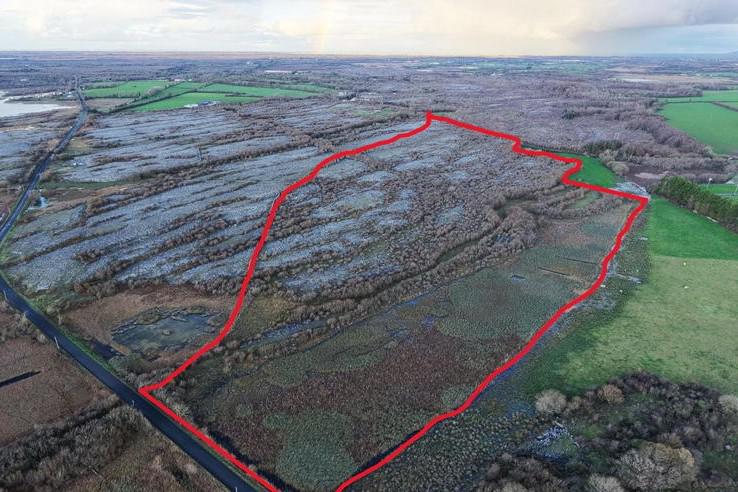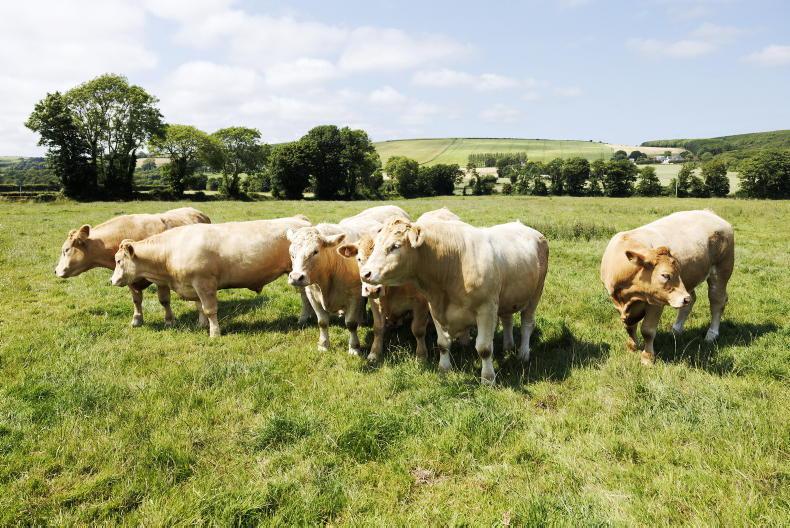Farmers availing of a nitrates derogation will have to spread all of their slurry by low-emission slurry spreading (LESS) equipment in 2021, according to a nitrates expert group tasked with reviewing the nitrates derogation.
The group has recommended that all slurry on farms stocked over 170kg organic nitrogen/ha should be only spread slurry using LESS equipment after 15 April 2020 and for 2021 this will apply from 12 January. The rules are for all farmers stocked over 170kg organic nitrogen/ha, including those that have been exporting slurry on paper up to now.
New measures
Next year it will be compulsory for farmers stocked over 170kg organic nitrogen/ha to take part in a farm-liming programme. All new grass reseeding must include minimum clover content as part of the grass seed mixture, however the inclusion rate must not exceed 50% of the sward mixture, the group recommended.
The review said that commonage and rough grazing ground should not be eligible for a derogation in 2020 and cannot be included for the calculation of the chemical fertiliser allowance for farm holdings.
As a consequence it said, this will reduce the chemical fertiliser allowance on marginal lands and reduce the risk of losses to the environment.
A measure to reduce the crude protein in concentrate feeds for grazing livestock on farms with a grassland stocking rate greater than 170kg organic nitrogen/ha in order to reduce excess protein in animals diets was also recommended.
Twelve thousand farmers
The new rules will apply to some 12,000 farmers. There were over 7,000 derogation farmers in 2018 and a further 5,000 with cattle which exceeded the 170kg organic nitrogen/ha limit, but these farmers exported slurry.
The recommendations were published by Minister for Agriculture Michael Creed and Minister for Housing Eoghan Murphy on Wednesday. Both Ministers have welcomed the recommendations of the review group and will move to bring these into force this autumn.
Minister Creed said: “I very much welcome the recommendations of this review which was conducted to examine further opportunities for derogation farmers to improve efficiencies and continue to reduce their environmental footprint”
“Given the challenges, I must acknowledge all the submissions received as part of this review and the level of ambition voiced to meet these challenges. This is an important cohort of farmers committed to high levels of efficiency who have an important role to play in protecting our environment,” he said.
Other measures
The nitrates expert group said that it recognised the significant level of ambition from the submissions of the review. Not all elements of the submissions could be advanced, however it said there were several proposals that merit discussion in the context of the next Nitrates Action Programme which is due for consideration by the European Commission at the end of 2021.
The review group considers the following proposals need to be considered further in the context of the current and future challenges facing the sector:
Ongoing research in fertiliser formulation provides an opportunity for both environmental and climate benefit. The use of inhibitor technology to reduce the losses from fertilisers provides a significant environmental and climate opportunity.There are environmental pressures at a catchment scale which can be attributed to intensification of agriculture. Intensively stocked dairy grazing platforms need further review in the context of the next NAP.Some 65% of the cattle in the country are on farms at stocking rates of less than 130kg/ha. The review group do not consider this group to be intensive however it said the next Nitrates Action Programme review should examine opportunities for this cohort to reduce their environmental footprint and contribute to the climate and water challenges.Measures to support improved biodiversity on all farms. Read more
Hit derogation farmers first with BEAM nitrogen reduction - INHFA
Silage run-off suspected to have caused fish kill
Slurry storage review planned by Department for extreme weather
Farmers availing of a nitrates derogation will have to spread all of their slurry by low-emission slurry spreading (LESS) equipment in 2021, according to a nitrates expert group tasked with reviewing the nitrates derogation.
The group has recommended that all slurry on farms stocked over 170kg organic nitrogen/ha should be only spread slurry using LESS equipment after 15 April 2020 and for 2021 this will apply from 12 January. The rules are for all farmers stocked over 170kg organic nitrogen/ha, including those that have been exporting slurry on paper up to now.
New measures
Next year it will be compulsory for farmers stocked over 170kg organic nitrogen/ha to take part in a farm-liming programme. All new grass reseeding must include minimum clover content as part of the grass seed mixture, however the inclusion rate must not exceed 50% of the sward mixture, the group recommended.
The review said that commonage and rough grazing ground should not be eligible for a derogation in 2020 and cannot be included for the calculation of the chemical fertiliser allowance for farm holdings.
As a consequence it said, this will reduce the chemical fertiliser allowance on marginal lands and reduce the risk of losses to the environment.
A measure to reduce the crude protein in concentrate feeds for grazing livestock on farms with a grassland stocking rate greater than 170kg organic nitrogen/ha in order to reduce excess protein in animals diets was also recommended.
Twelve thousand farmers
The new rules will apply to some 12,000 farmers. There were over 7,000 derogation farmers in 2018 and a further 5,000 with cattle which exceeded the 170kg organic nitrogen/ha limit, but these farmers exported slurry.
The recommendations were published by Minister for Agriculture Michael Creed and Minister for Housing Eoghan Murphy on Wednesday. Both Ministers have welcomed the recommendations of the review group and will move to bring these into force this autumn.
Minister Creed said: “I very much welcome the recommendations of this review which was conducted to examine further opportunities for derogation farmers to improve efficiencies and continue to reduce their environmental footprint”
“Given the challenges, I must acknowledge all the submissions received as part of this review and the level of ambition voiced to meet these challenges. This is an important cohort of farmers committed to high levels of efficiency who have an important role to play in protecting our environment,” he said.
Other measures
The nitrates expert group said that it recognised the significant level of ambition from the submissions of the review. Not all elements of the submissions could be advanced, however it said there were several proposals that merit discussion in the context of the next Nitrates Action Programme which is due for consideration by the European Commission at the end of 2021.
The review group considers the following proposals need to be considered further in the context of the current and future challenges facing the sector:
Ongoing research in fertiliser formulation provides an opportunity for both environmental and climate benefit. The use of inhibitor technology to reduce the losses from fertilisers provides a significant environmental and climate opportunity.There are environmental pressures at a catchment scale which can be attributed to intensification of agriculture. Intensively stocked dairy grazing platforms need further review in the context of the next NAP.Some 65% of the cattle in the country are on farms at stocking rates of less than 130kg/ha. The review group do not consider this group to be intensive however it said the next Nitrates Action Programme review should examine opportunities for this cohort to reduce their environmental footprint and contribute to the climate and water challenges.Measures to support improved biodiversity on all farms. Read more
Hit derogation farmers first with BEAM nitrogen reduction - INHFA
Silage run-off suspected to have caused fish kill
Slurry storage review planned by Department for extreme weather










SHARING OPTIONS